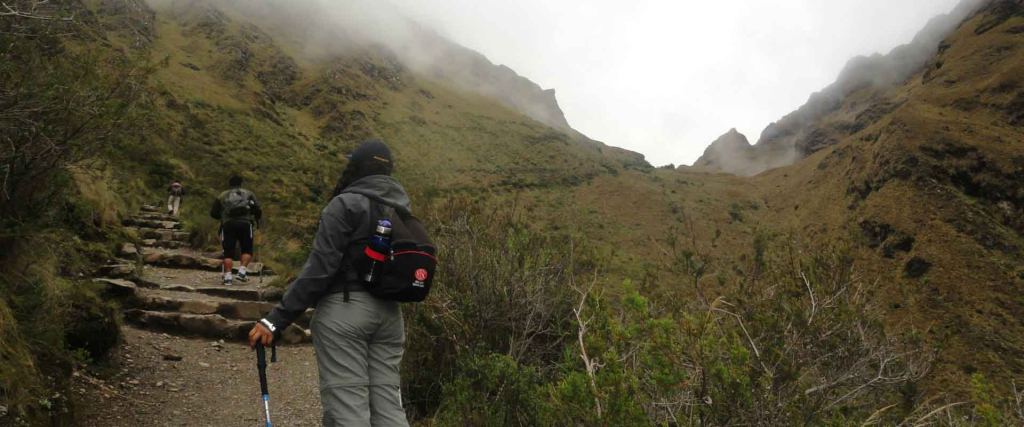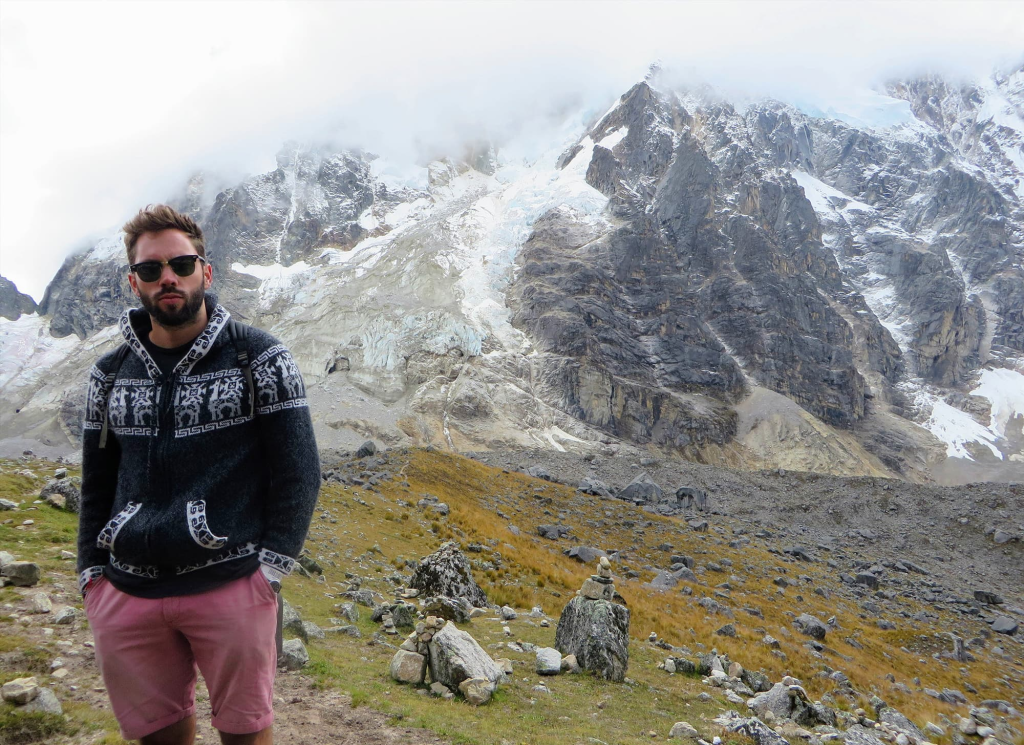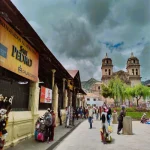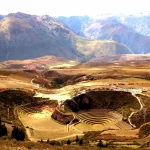An Alternative to the Inca Trail

The Inca Trail is undoubtedly the most well-known route to reach Machu Picchu, but it is not the only option for adventurers looking to explore the Peruvian Andes. The Salkantay Trek, less crowded and more challenging, offers an equally impressive experience for those seeking a deeper connection with nature and history.
This trek, which spans several days and traverses diverse landscapes, is known for its physical and mental demands. However, those who complete it feel rewarded with a sense of accomplishment that few other treks can offer. Additionally, the Salkantay Trek is often more affordable than other popular routes, making it an attractive option for many travelers.
It is important to note that Mount Salkantay, which gives the route its name, is considered sacred by the Incas. This “Apu” or spirit of the mountain, continues to be the subject of offerings and rituals by local communities, who seek its protection during the journey.
Essential Preparations


Embarking on the Salkantay Trek requires meticulous preparation. Hikers must be physically prepared to handle days of trekking that can extend up to ten hours. Additionally, acclimatization to the altitude is crucial; it is recommended to spend at least two or three days in Cusco before starting the trek to avoid altitude sickness, a condition that can seriously impact performance in the Andean heights.
During these days of preparation, visitors can familiarize themselves with local customs, such as the consumption of coca leaves. This practice, beyond its medicinal benefits for altitude, holds deep cultural and spiritual significance. The region’s inhabitants consider coca a gift from the goddess Pachamama, and chewing it is a way to honor her and seek her protection during the trek.
Luggage and Logistics


Adequate logistical preparation is essential for success on the Salkantay Trek. Hikers must be equipped with appropriate clothing for a climate that varies significantly throughout the journey, from the intense cold of the high altitudes to the heat of the jungle. Footwear also plays a crucial role; well-fitted trekking boots can prevent injuries and ensure a more comfortable walk.
Additionally, it is wise to carry trekking poles, which are especially useful on the steep descents that characterize parts of the route. Another important aspect is to carry enough cash, as there are no ATMs along the trail. It is recommended to bring around $300 to cover any unexpected expenses.
Some hikers adopt the custom of carrying small amulets or stones collected from the Salkantay River, which they then leave as offerings at the highest points of the trek. These offerings are a way to thank the Apus for protection during the journey.
A Journey Through Stunning Landscapes


El Salkantay Trek es una odisea a través de algunos de los paisajes más diversos y espectaculares de los Andes. Desde los picos nevados hasta las exuberantes selvas tropicales, cada día ofrece un nuevo escenario que deja sin aliento a los caminantes.
Particularmente destacable es el Paso Salkantay, a más de 4,600 metros sobre el nivel del mar. Según la tradición local, es en este punto donde los viajeros pueden escuchar los susurros del “Apu Salkantay” en el viento. Esta creencia ancestral sostiene que el espíritu de la montaña comunica mensajes a quienes saben escuchar, un momento místico que añade una dimensión espiritual a la ya impresionante experiencia visual.
The Salkantay Trek is an odyssey through some of the most diverse and breathtaking landscapes of the Andes. From snow-capped peaks to lush tropical jungles, each day presents a new scene that leaves hikers in awe.
Particularly noteworthy is the Salkantay Pass, at over 4,600 meters above sea level. According to local tradition, it is at this point where travelers can hear the whispers of the “Apu Salkantay” in the wind. This ancient belief holds that the spirit of the mountain communicates messages to those who know how to listen—a mystical moment that adds a spiritual dimension to the already stunning visual experience.
Cultural Connection on the Trail

Más allá de la aventura física, el Salkantay Trek es una oportunidad para interactuar con las comunidades andinas, que han habitado estas montañas durante siglos. Estas breves pero significativas interacciones permiten a los viajeros aprender sobre un modo de vida que ha perdurado a lo largo del tiempo, casi inalterado por la modernidad.
Una leyenda popular entre estas comunidades narra la historia de los “Espíritus Guardianes de los Animales”, que toman la forma de cóndores, pumas y serpientes. Según la creencia local, avistar uno de estos animales durante el trek es un buen augurio, una señal de que el viajero está bajo la protección de los Apus.
Beyond the physical adventure, the Salkantay Trek offers an opportunity to interact with the Andean communities that have inhabited these mountains for centuries. These brief but meaningful interactions allow travelers to learn about a way of life that has endured over time, largely untouched by modernity.
A popular legend among these communities tells the story of the “Guardian Spirits of the Animals,” who take the form of condors, pumas, and snakes. According to local belief, spotting one of these animals during the trek is a good omen, a sign that the traveler is under the protection of the Apus.
Challenges and Rewards

Like any high-altitude trek, the Salkantay presents significant challenges. Altitude sickness is one of the most common obstacles, and it is vital that hikers are prepared to face it. Local guides often offer coca tea and other traditional remedies to mitigate its effects, but the most important thing is not to underestimate the symptoms and be willing to take breaks when necessary.
Accumulated fatigue is another challenge. Maintaining a steady pace and taking advantage of every opportunity to rest is crucial for successfully completing the trek. For many, the sight of the Southern Cross in the night sky—a symbol of balance and protection in Inca cosmology—is a source of inspiration and comfort during the most difficult moments of the journey.
The Final Destination: Machu Picchu

El Salkantay Trek culmina con la llegada a Machu Picchu, un momento que muchos describen como el punto culminante de la experiencia. Llegar a este sitio sagrado después de días de ardua caminata es una recompensa que va más allá de las palabras.
Existe la creencia entre los locales de que Machu Picchu no es solo una ciudad histórica, sino también un lugar cargado de energía espiritual. Se dice que recorrer sus terrazas y templos tiene un efecto revitalizante, proporcionando claridad mental y paz interior. Aunque estas creencias puedan parecer esotéricas, muchos visitantes coinciden en que Machu Picchu tiene un aura especial que deja una huella imborrable.
The Salkantay Trek culminates with the arrival at Machu Picchu, a moment that many describe as the pinnacle of the experience. Reaching this sacred site after days of arduous trekking is a reward that goes beyond words.
There is a belief among locals that Machu Picchu is not just a historical city but also a place charged with spiritual energy. It is said that walking through its terraces and temples has a revitalizing effect, providing mental clarity and inner peace. While these beliefs may seem esoteric, many visitors agree that Machu Picchu has a special aura that leaves an indelible mark.
Final Reflections
The Salkantay Trek is more than just an alternative to the Inca Trail; it is a transformative experience that challenges the traveler physically and mentally, while also offering a deep connection with nature and history. The legends and beliefs surrounding this route not only enrich the journey but also invite reflection on one’s place in the world.
For those seeking an adventure that combines challenge, beauty, and a sense of the mystical, the Salkantay Trek is a choice that does not disappoint. As hikers move towards Machu Picchu, they are not just following a path—they are immersing themselves in a narrative that has endured for centuries. May the Apus accompany you on your journey.
Frequently Asked Questions
What Should I Know Before the Salkantay Trek?
Before starting the Salkantay Trek, it’s crucial to acclimate in Cusco for at least two days to avoid altitude sickness. Additionally, being in good physical shape is important, as the trek is demanding and involves several days of hiking at high altitudes.
Can I Do the Salkantay Trek on My Own?
Yes, it is possible to do the Salkantay Trek on your own, but it is recommended to go with a trekking agency or a local guide. This not only ensures that you follow the correct route but also provides support in case of emergencies and simplifies logistics, such as transporting gear and food.
Where Does the Salkantay Trek Start?
The Salkantay Trek typically begins in the small town of Mollepata, which is about a 3-hour drive from Cusco. From there, hikers head to Soraypampa, the first campsite, before continuing toward the Salkantay Pass.
How Many Days Does the Salkantay Trek Last?
The Salkantay Trek usually lasts between 4 and 5 days, depending on the itinerary you choose. The trek culminates at Machu Picchu on the final day, allowing hikers to explore the citadel after several days of trekking.
What Is the Best Time to Do the Salkantay Trek?
The best time to do the Salkantay Trek is during the dry season, which runs from May to September. During these months, the weather is more predictable, with sunny days and less chance of rain, making for better trail conditions.




